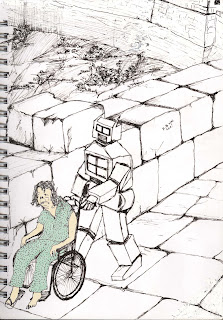syndromes and half a century
We had planned to watch these films at the 20th Film Fest but caught only Apichatpong Weerasethakul's Syndromes and a Century Friday night. That morning we had gone to the Bright Hill Temple where Ma J was cremated to collect her ashes, place the bones (laid out on a metal trolley covered with a plastic sheet) into a bright yellow and rectangular urn, and to carry that urn to stacks and tight rows of the same - a library of completed lives. For J and I, we are, as J puts it, sad but relieved for Ma J . You could say Ma J dying did not take anyone by surprise. When she was hospitalised last Saturday for a heart attack, the doc had warned that should her heart would fail, he would not be able to resuscitate it. So for the next 24 hours, relatives all had a chance to visit with an unusually lucid Ma J. Death has no syndrome. If not, these would be its most likely signs - or so others who recounted similar stories of their ailing and aged (grand)parents dying had said. Just a few


